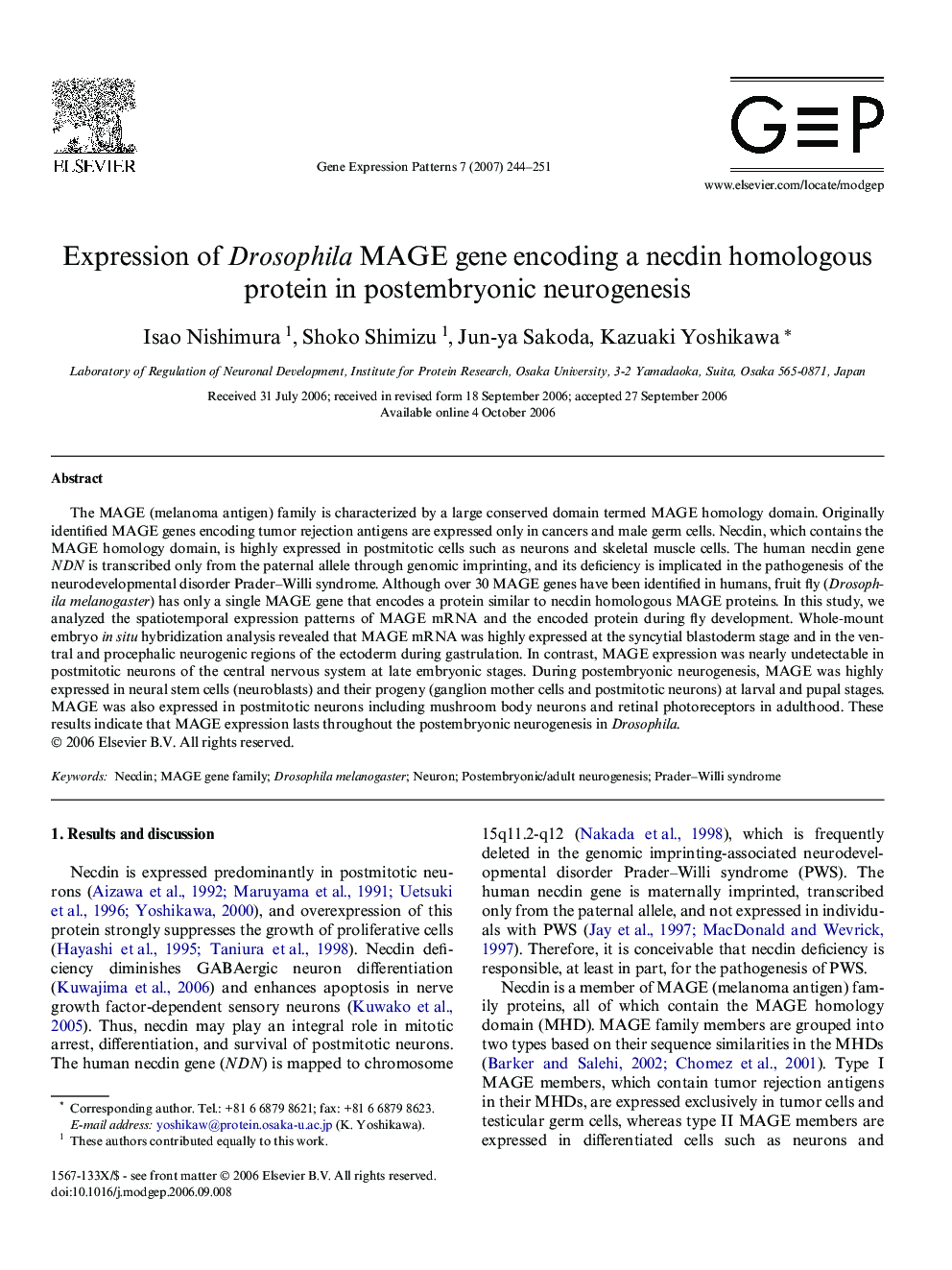| Article ID | Journal | Published Year | Pages | File Type |
|---|---|---|---|---|
| 2182299 | Gene Expression Patterns | 2007 | 8 Pages |
The MAGE (melanoma antigen) family is characterized by a large conserved domain termed MAGE homology domain. Originally identified MAGE genes encoding tumor rejection antigens are expressed only in cancers and male germ cells. Necdin, which contains the MAGE homology domain, is highly expressed in postmitotic cells such as neurons and skeletal muscle cells. The human necdin gene NDN is transcribed only from the paternal allele through genomic imprinting, and its deficiency is implicated in the pathogenesis of the neurodevelopmental disorder Prader–Willi syndrome. Although over 30 MAGE genes have been identified in humans, fruit fly (Drosophila melanogaster) has only a single MAGE gene that encodes a protein similar to necdin homologous MAGE proteins. In this study, we analyzed the spatiotemporal expression patterns of MAGE mRNA and the encoded protein during fly development. Whole-mount embryo in situ hybridization analysis revealed that MAGE mRNA was highly expressed at the syncytial blastoderm stage and in the ventral and procephalic neurogenic regions of the ectoderm during gastrulation. In contrast, MAGE expression was nearly undetectable in postmitotic neurons of the central nervous system at late embryonic stages. During postembryonic neurogenesis, MAGE was highly expressed in neural stem cells (neuroblasts) and their progeny (ganglion mother cells and postmitotic neurons) at larval and pupal stages. MAGE was also expressed in postmitotic neurons including mushroom body neurons and retinal photoreceptors in adulthood. These results indicate that MAGE expression lasts throughout the postembryonic neurogenesis in Drosophila.
